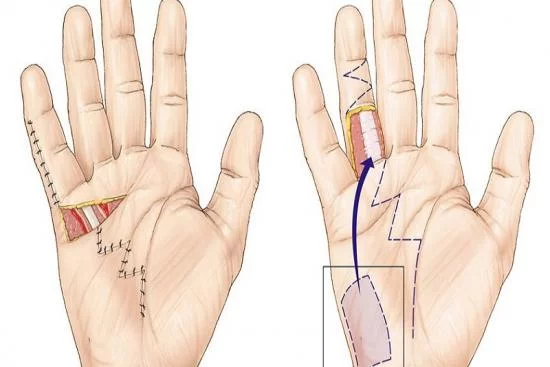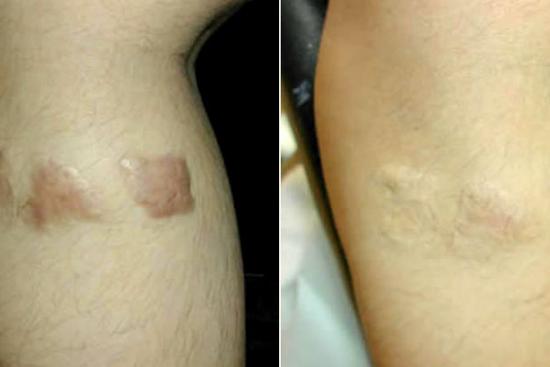What is a Skin Graft in Case of Burns in Turkey & Istanbul?
Skin grafting is a plastic surgery where healthy skin is transplanted in the diseased or burned areas of the body. It is used to cover lost or damaged skin, or to treat some human skin conditions such as vitiligo. A skin transplant is mostly indicated for people with deep second-degree burns.
In this cosmetic surgery the plastic surgeons removes the epidermis to treat the skin that is damaged by burns.
Cosmetic surgeons performs this type of surgery in a hospital or a clinic, on a patient under local anaesthesia. Skin transplant in our partner clinics and hospitals in Turkey has a success rate of 98%.
- Infection
- Transplant Rejection
- Redness
- The duration depends on the complexity of the burn
- Visible result after 6 months of the operation
- 98%
What is the cost of a skin graft in Turkey & Istanbul?
The cost of a skin graft in Turkey and Istanbul varies depending on the patient's condition. The more severe or extensive the damage, the higher the cost of the procedure. In order to know the price of a treatment, do not hesitate to ask for a free quote with Turquie santé
Best Clinics with Verified Reviews

- Multispecialized hospital
- 7 operating rooms
- Capacity é of 170 beds

- Multispecialized hospital
- Hospital founded in 2007
- Very good reputation in ENT department
The process of the surgery in Turkey & Istanbul
The surgeon is in charge of choosing the type of the operation and the donor area. The operation takes place in an operating room, using sterile equipment, under general anaesthesia.
The duration of the surgery depends on the location of the graft and the extent of the skin to be treated. A good preparation of the patient before, during and after the surgery is ensured.

Does the skin graft have any drawbacks?
Unfortunately, skin grafts have some disadvantages. The dermatologist may discourage you to have the skin graft for multiple reasons:
- Contamination of the wound.
- Possibility of the development of a malignant tumour.
What are the risks Skin Graft in Case of Burns?
Like any operation, there is a risk of complications:
Anesthesia-related complications
The complication related to anaesthesia are:
- Respiratory complications
- Allergy to anesthesia products
- Wake up delay.
Surgery-related complications
The complication that may occur during the surgery are:
- Haemorrhagic risk
- Risk of post-operative infection
- Risk of delayed healing
- Risk of failure.
How to prevent these complications?
To prevent these complications, consult the surgeon. Knowing the patient's case history and his/ her current treatment is crucial.
- You must stop any treatment that interferes with coagulation.
- You have to treat any local or regional concomitant infection.
- Beware of possible corticosteroid therapy
- A sterile dressing and adequate post-operative care are required.
Types of Grafts for Burns: Autografts, Dermal Regenerator & Tilapia Skin Graft
Autografts
The most employed techniques of skin reconstruction for burns is auto-transplantation (autograft or autologous graft). The latter consists of performing skin grafts by taking the tissue from the patient. The only disadvantage is that these grafts can leave a small scar in the area from which they are obtained.
Xenografts: Tilapia Skin Graft & Dermal Generator
Sometimes the burn is so deep that there is no dermal or fat tissue and the tendons or bone are exposed. In this case, other reconstruction techniques should be used. For example, it can be:
The Dermal Regenerator
It's a type of material developed by tissue Bioengineering. The latter helps the body regenerate a dermis with characteristics very similar to the original.
Tilapia Skin Graft
Tilapia skin graft is a temporary cutaneous transplant of a fish skin that can be removed after 10 postoperative days.
The fish skin is rich of nutrients and collagen which speeds the healing process.
Which are the best Types of Grafts for Burns treatment?
The doctor will help you choose between the types of grafts for burns treatment. However, autografts are safer and do not require any immunosuppressant drugs. This is why it is considered as the best type of skin graft for burns.
How long does this reconstruction surgery take?
The duration of the skin transplant depends on the initial complexity of the burn. It also varies depending on the type of grafts used during the surgery.
What should a patient do after this intervention?
After having undergone a skin graft for a burn, the patient will have to treat any scars through:
- Hydration;
- Acupressure;
- Medical silicones and creams that favour a natural healing.
In the case of more serious injuries, the patient may need physiotherapy to speed the process of recovery of the injured area.
Share this page







